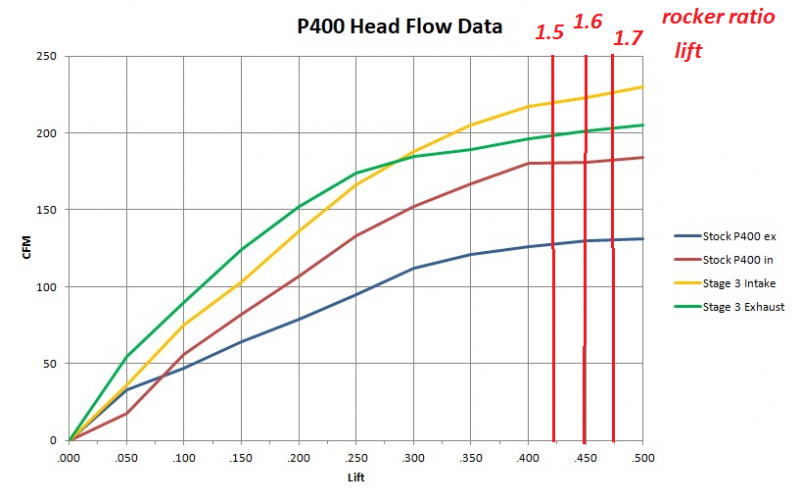Finished up the work on my P400 heads now all that's left is to finish the coating on the combustion chambers...
This data is a direct apples to apples test, P400 before and P400 after, the heads have both bigger valves, valve unshrouding, coated runners, 2 angle valve job, ( stage 3 )
These heads made a visit to the flow bench 4 different times during the process and the flow was measured every .050" lift...

This data is a direct apples to apples test, P400 before and P400 after, the heads have both bigger valves, valve unshrouding, coated runners, 2 angle valve job, ( stage 3 )
These heads made a visit to the flow bench 4 different times during the process and the flow was measured every .050" lift...

